Affiliate disclosure: This post may contain affiliate links. Please see our Privacy Policy.
Canning mistakes are easy to make, and often just as easy to fix, provided you know how to troubleshoot.
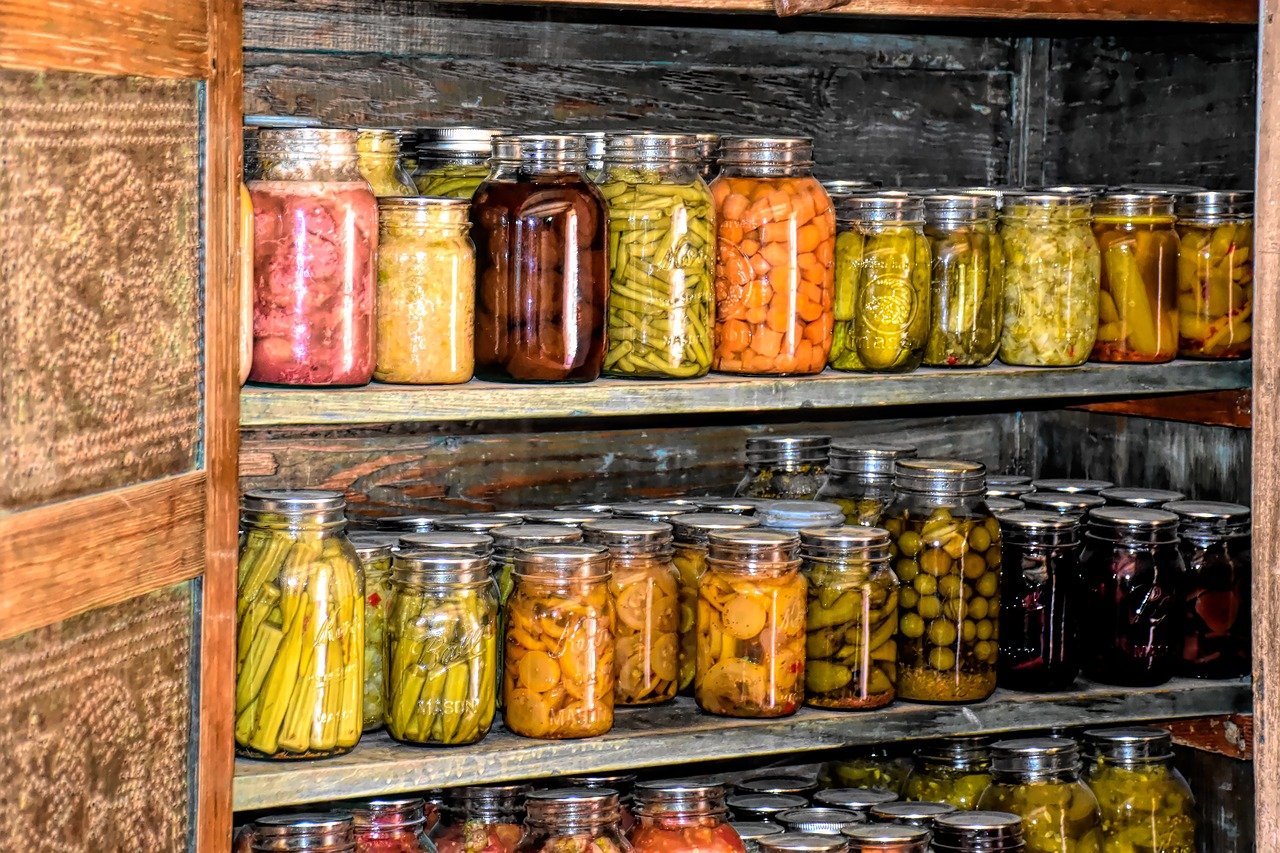
The following was contributed by Bethany at Family Growing Pains. Bethany blogs about gardening, home preserving, and raising backyard chickens on her small homestead.
Once you dive into the world of gardening and growing your food, learning how to can the food that you produce is the next logical step. Too many people stop before making that step, afraid of canning. If you can make a recipe, then you’ll be able to learn how to can. First, take a look at these common canning mistakes, so when you finally make your first batch, it’ll be successful.
Common Beginner Canning Mistakes
I remember the first time I decided I wanted to try canning. My first attempt at canning was making a batch of strawberry jam – a classic first-timer recipe. I was so nervous, and I wasn’t even using a pressure canner.
Oh boy, the first time I used a pressure canner, I was full of nerves. Everyone has heard of horror stories about pressure canners blowing up. I grew so many green bean plants that I knew I had to can them, but you need a pressure canner for vegetables.
It turns out that it wasn’t as bad as I expected, and nothing exploded, but I still made plenty of mistakes. I had liquids siphon out, lids not seal, jars shatter, and jams not set. Part of canning is making mistakes and learning from them.
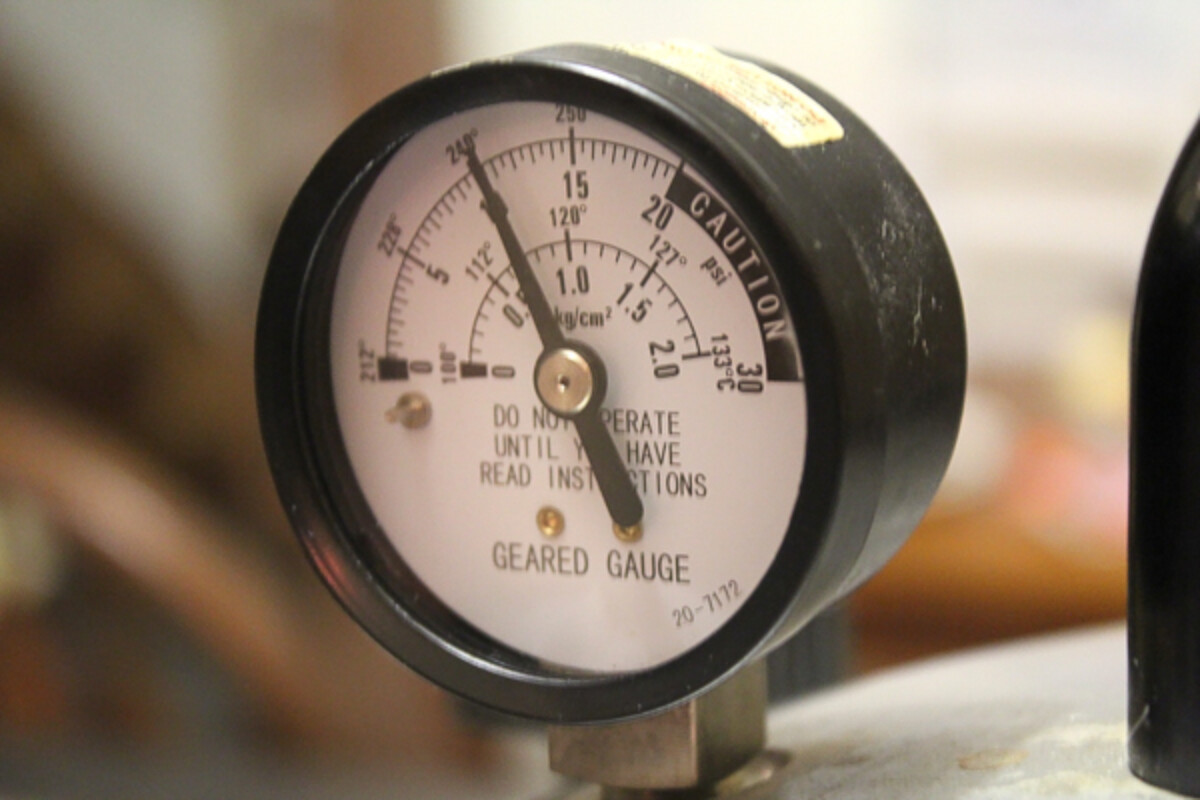
Let’s look at some of the most common canning mistakes and how you can fix them in the future. No use making the same mistake twice!
Using a Water Bath Canner When You Need a Pressure Canner
First, you have to know when to use a water bath canner, often called a roiling water bath, and when to use a pressure canner. Failing to use a pressure canner when it’s needed is a dangerous mistake.
Here’s how you know which method to use.
Acidic foods may be canned in a boiling water bath. You don’t need any special equipment; it requires a large stockpot that you can submerge canning jars, lids, canning jars, and the food you want to preserve.
Examples of foods you can preserve in a boiling water bath:
- Pickles
- Jams
- Jellies
- Salsa
- Tomatoes (with added acid)
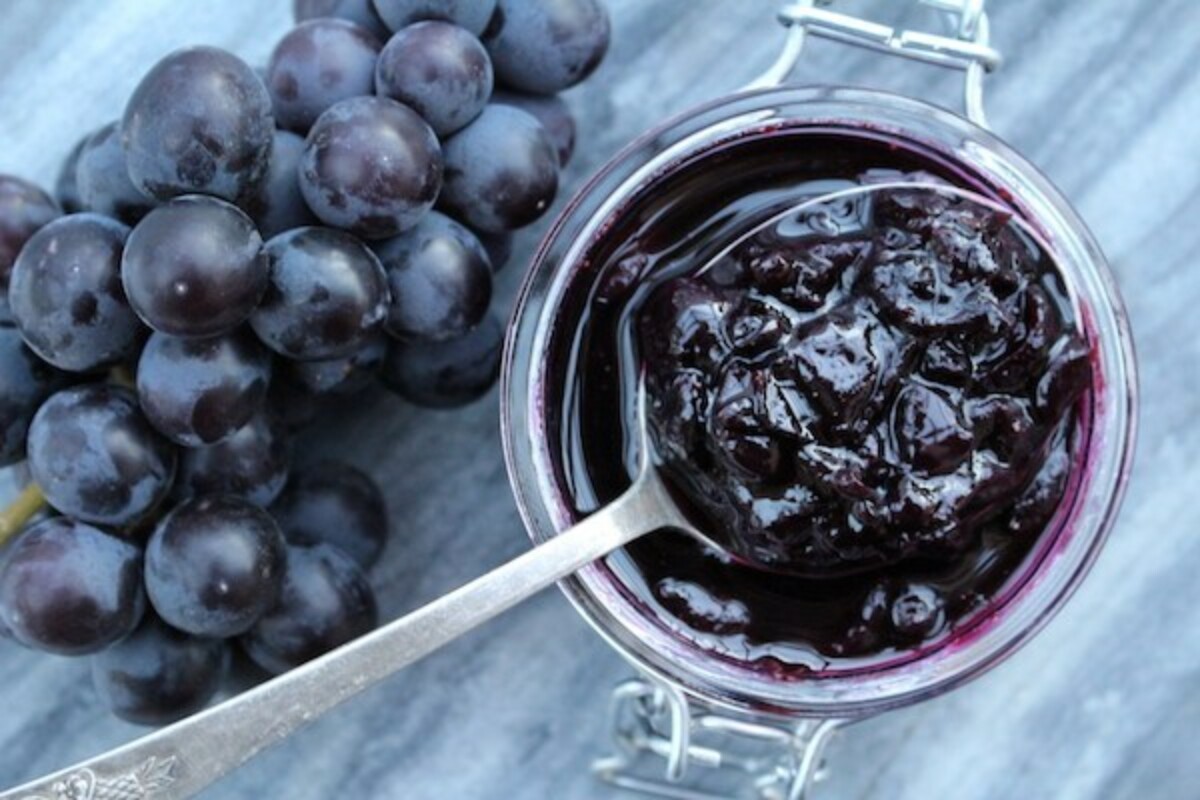
Non-acidic foods require a pressure canner, which is NOT a pressure cooker. You need a pressure canner because these foods have a higher risk of containing bacteria, and the pressure is required to kill off the spores. If you fail to use the right equipment, you increase the risk of botulism, which can kill you.
Examples of foods that require a pressure canner include:
- Vegetables (not pickled)
- Soup
- Chicken Broth
- Meat
- Dry Beans (Pinto, Black Beans, etc)
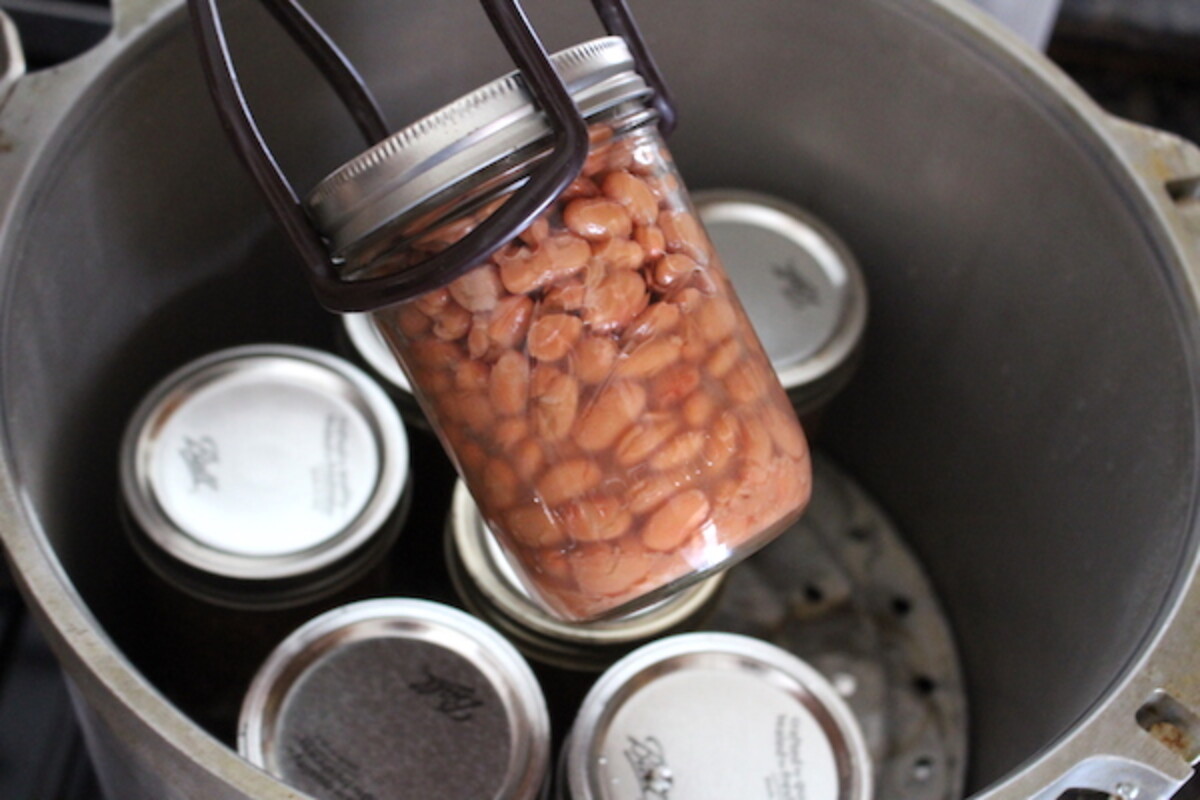
Overfilling Jars (Not Using Propper Headspace)
When you read a safe canning recipe, it will tell you how much headspace to leave at the top of the jar. Depending on what you’re canning, the recipe might indicate any amount from one inch to half of an inch.
Headspace is the space between the surface of the food and the rim of the jar. If you fill your jar too much, the lids might not seal properly. Also, failing to leave the proper headspace might cause the liquids to siphon out, spilling over the side. That can cause a bad seal on your jars.
Of course, an unsealed jar isn’t the worst thing; it can happen without making any mistake. You can eat the food immediately or put it in the refrigerator and eat it within a week. Multiple unsealed jars are a big deal, so always leave the correct headspace.
All inexperienced canners WILL make this mistake, myself included. I remember several tomato sauce jars that didn’t seal because I overfilled my jars and ignored the recommended headspace.
Don’t panic, and don’t give up canning. This is easy to fix! You can buy a headspace measurer, or my preference, a canning funnel with headspace measurements, to ensure you have the right measurement before putting the jars into the canner.
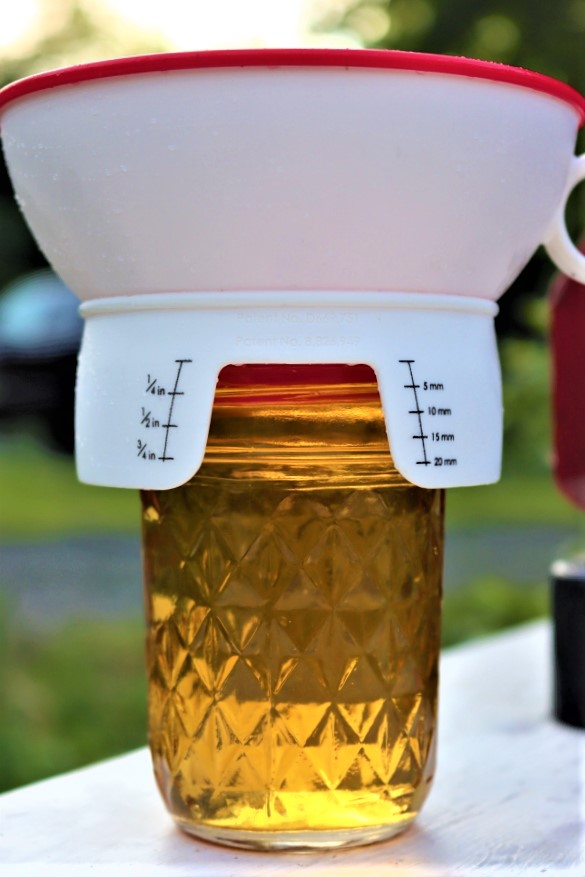
Reusing Canning Lids
Canning lids are not meant to be reused. The adhesive rubber on the underside of the lid wears out fast, so while you might be able to reuse and reseal them again, there is no guarantee that the seal will stick.
Once again, it’s not worth the price of having multiple unsealed jars, especially since canning lids rarely cost more than $3 per box. Save the used lids in a separate bag; I use them for leftovers that I store in the refrigerator.
The exception to this rule is Tattler reusable canning lid. These lids are meant to be reusable with interchangeable rubber seals.
Not Looking for Cracks or Chips in the Jars
Always inspect all of your canning jars before filling them with hot food. All it takes is a hairline crack for the jar to crack when you put it into the canner. That leads to entire jars of wasted food; no one wants that.
I do the inspection when I scrub and clean the jars. Turn it over in your hand, looking for chips along the rim (which is common) and cracks along the sides.
Sometimes, even when we inspect the jars, we miss something; these are glass after all! Try your best to examine carefully.
This jar of home-canned carrots had a chip down near the bottom, and that blew out in the pressure canner.
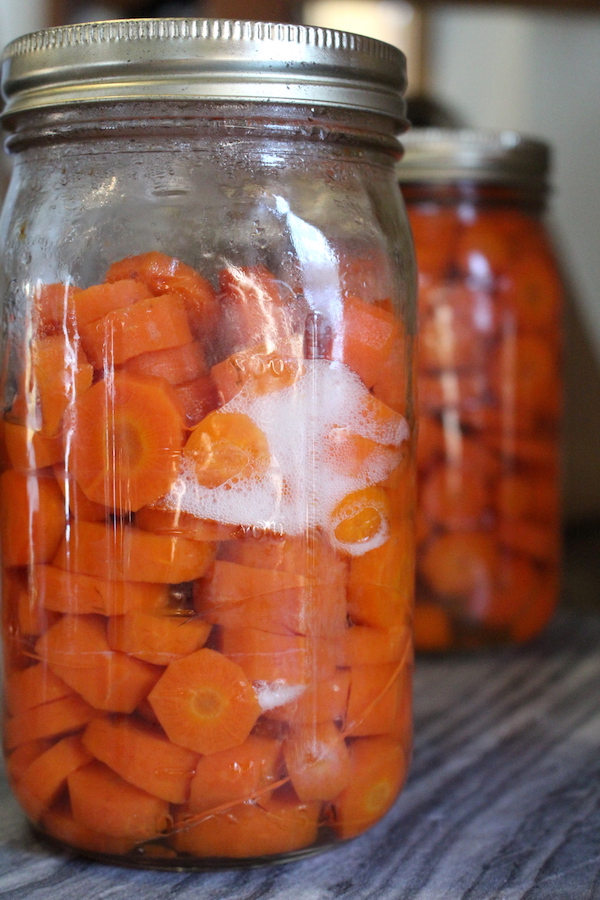
Not Using Hot Jars
Siphoning is a common canning problem with fruit and tomato products, but it does happen with vegetables and meats. This is the loss of liquid around the edges of your jar. Aside from not using the appropriate headspace, not using hot jars is one of the most common canning mistakes.
Loss of liquid happens commonly when there is an extreme temperature difference. Preheating your jars before filling puts hot food into hot jars, and then you stick it into a hot canner. Not only does this reduce siphoning, but it also reduces the risk of breaking a jar.
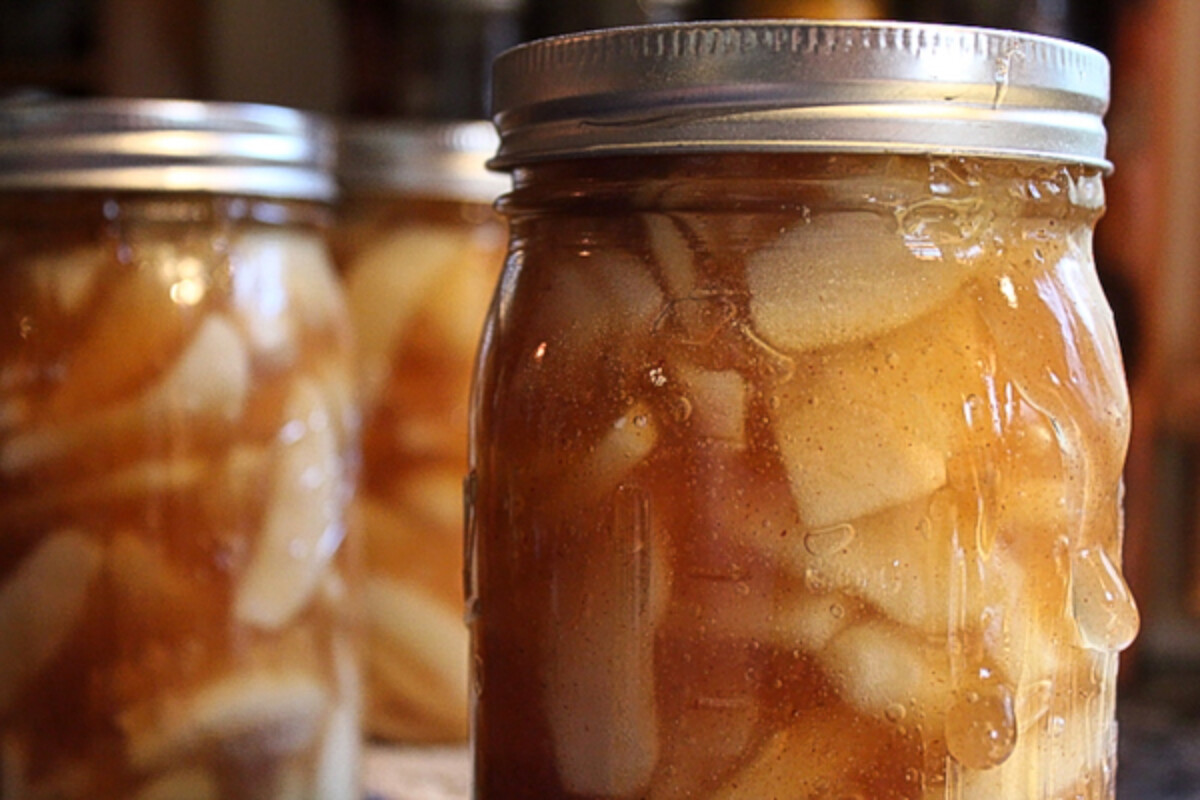
There are several ways you can heat your jars. If you time it right, you might be able to run them through the dishwasher and take them out during the drying phase. If you’ve ever tried to take a jar out of a dishwasher prematurely, you know that those cups are HOT.
If you’re using a boiling water bath, you can put the jars into the water and keep the lid on as the water heats up. Another option is to put your freshly washed jars in a bowl or the sink and cover them with hot water. Try adding water from a kettle to increase the temperature.
In the worst case, cold jars will actually break in the canner. A break along the bottom seam of the jar is a classic case of thermal shock…
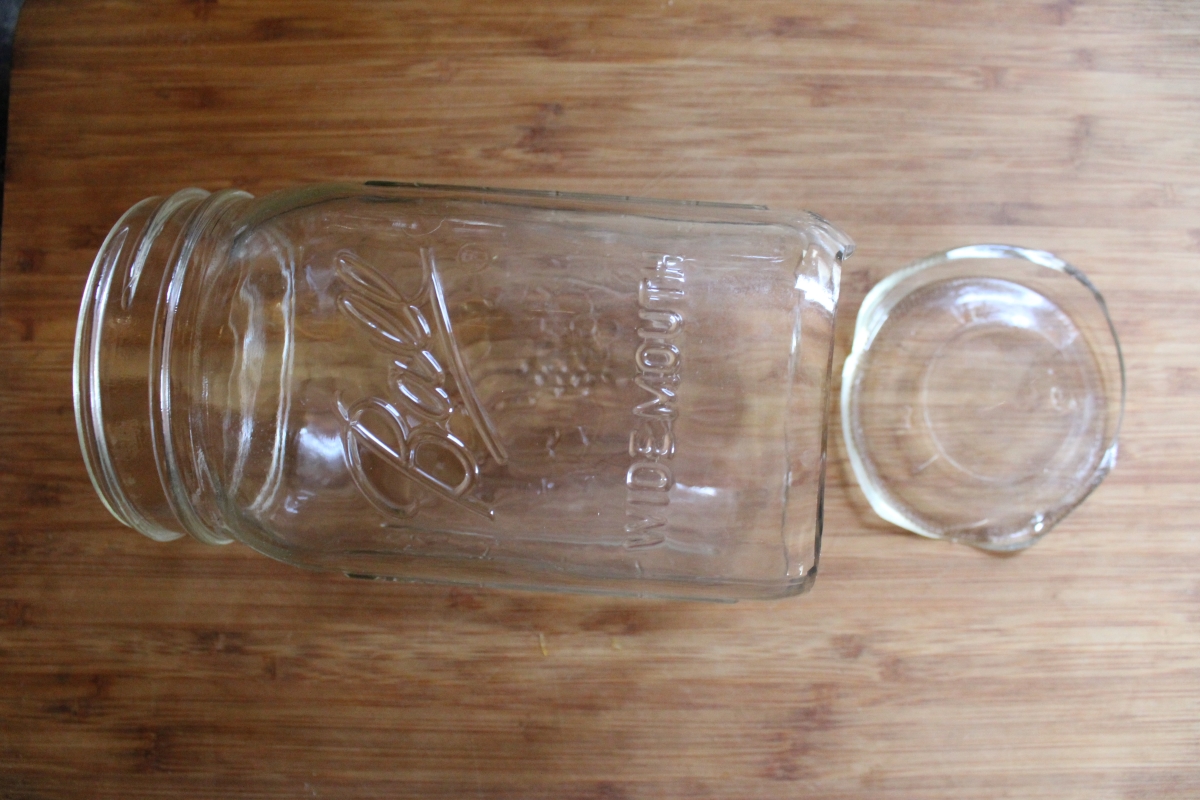
Leaving the Air Bubbles in the Jar
So, you read the instructions on all the websites about how to can foods and know that you’re supposed to move a bubble popper or butter knife around the jar to help burst air bubbles. It seems like a waste of time, so why not skip this step?
Don’t skip it; it only takes a few seconds for each jar, but those air bubbles add more – you guessed it – air to your jar. Not only does that potentially add more air in your headspace leading to a bad seal, but it also could lead to spoilage. Air bubbles give space for bacteria to live.
Forgetting to Wipe the Edges of the Jar
I think one of the essential steps of canning is wiping the edges of the jar. When you fill the jars with whatever you’re cooking, bits and pieces end up on the edges. If you don’t wipe down the edges and put the lid over the top of these bits of food, the lids won’t seal.
This is an easy canning mistake to fix. Take a wet rag or paper towel and wipe the jar’s edges before placing the lid on top and screw on the rings. If you make it part of your canning routine, you’ll never forget to do it.
(Here’s I’m quickly pouring homemade blackberry jam into a jar…because I can’t find my funnel. That’s a recipe for a messy rim, but wiping up after solves that. Using a canning funnel helps keep the jar rims clean, but it’s not a complete solution, be sure to still wipe the rims to ensure a good seal.)
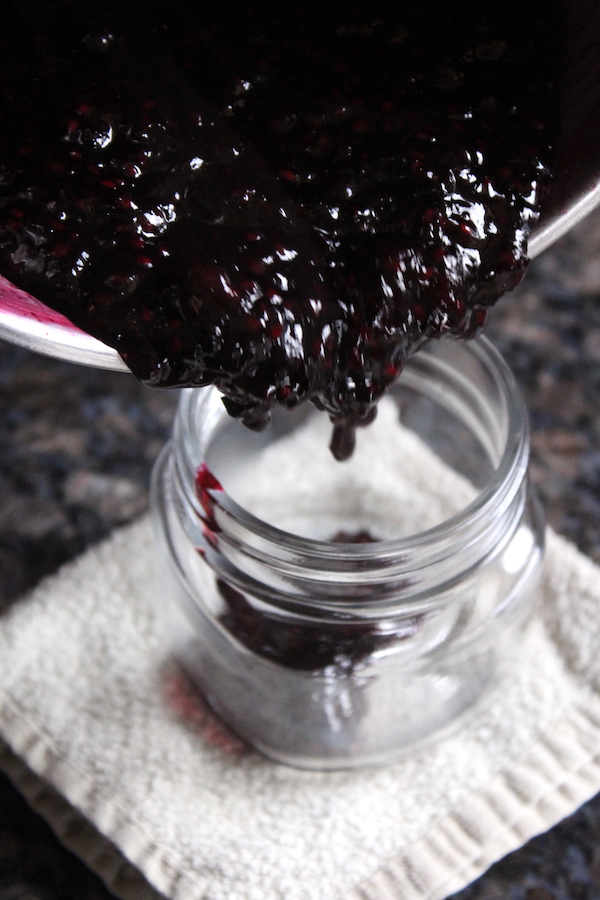
Failing to Adjust Canning Time or Pressure Based on Your Altitude
When you look at most canning recipes, it shows canning times or canning pressure based on your altitude. If you live more than 1,000 square feet above sea level, you have to adjust these because the water won’t boil at the same temperature at higher altitudes than at sea level.
Making adjustments of either the canning time or pressure makes up for the difference in altitudes. Your food won’t be preserved safely without the change.
Not Adding Enough Water to the Canner
Both roiling water baths and pressure canners require water. When adding water to a pressure canner, look for indentations on the interior sides and fill up to these markers. Your canner manual will help you figure out how much water is needed for your particular model.
When using a boiling water bath, the lids must be covered by two inches of water or more. This step is necessary because it heats the food evenly on all sides of the jar.
Taking Jars Out of the Canner Too Soon
You did it! You canned your first thing, and you’re ready to see the finished product. As soon as the timer goes off, you remove the jars from the canner and smile at what you made.
Most of the time, when you do this, nothing wrong will happen, but leaving the jars in the canner after processing time ends with the heat turned off reduces the risk of siphoning. Let the batch of jars sit in the canner for five minutes before removing them and placing them on a dishtowel.
If you’re pressure canning, turn off the heat but leave the lid on it. It has to reduce heat naturally and unlock when all of the pressure leaves. Once your canner lid opens and you can safely remove the lid, take it off and let the jars sit for 10 minutes inside of it.
Disturbing Jars Too Quickly
When I remove the jars from the canner, I place them on my kitchen counter with a dishtowel underneath the jars. The recommendation is to allow your jars to cool for 12-24 hours before disturbing, allowing the contents to cool completely.
Why?
Most lids seal well before the cooling process ends, but some do need longer. If you disturb jars too early, it might break the developing seal by moving the hot food in contact with the lid’s adhesive part.
Storing the Jars with the Rings On
The last of the canning mistakes you don’t want to make is storing the canned food with the rings still on the jars. It’s an easy mistake to make. After letting the jars rest on the counters for 24 hours, label and store them away. You might not even think about the rings.
What’s problematic about storing jars with the rings still on?
Even with the rings on, the lids can loosen up and come unsealed, allowing air and bacteria to enter under the lid. That can lead to spoilage, which is hidden by the rings still kept on the jars. In some cases, the pressure from the rings might cause the lids to reseal.
Storing jars with the rings off makes it easy for you to spot a jar with a bad seal. You’ll be able to take it right out of storage and toss it. Never eat food that came out of a jar with a bad seal; you have no idea when the seal loosened and what bacteria might live in the food.
Beyond that, mold and rust are common under jar rings. During canning, small amounts of liquid escape the jar and can become trapped under the ring…meaning that it stays moist and sugary under there. A few months later, you might try to twist the ring only to find it stuck shut. (Or twist it off to find the threads coated in mold.)
Vacuum within the jars should be holding the lids on, as it is with these home-canned strawberries, rather than the ring once processing is complete and the jars have cooled.
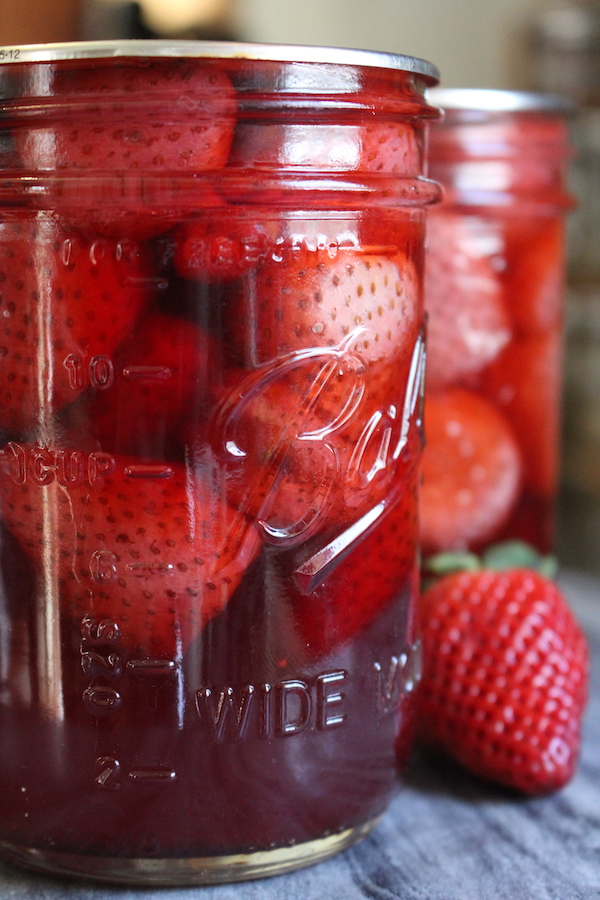
How to Fix Canning Mistakes
If you make canning mistakes, you CAN fix them if you catch the error quickly. Mistakes must be caught within 24 hours. If you figure out that you made a mistake and it’s within that time frame, go ahead and reprocess that.
Whatever you do, don’t forget the 24-hour rule – it’s serious. After that, toss the food out – it’s not worth the risk of making you or your family member safe.
Something to remember is that not all foods handle reprocessing. I’ve messed up several batches of jellies and jams; those handle reprocessing well. Usually, I simply need to add more pectin or sugar to make the right consistency.
However, reprocessing home canned green beans? That would turn them into a mushy bean; I doubt I would want to eat those. Soft foods handle reprocessing the best.
Freeze What Doesn’t Reprocess Well
I know green beans don’t handle reprocessing well because I messed up a batch one time. Several of the lids didn’t seal, so I tried it again. Trust me, that texture in a casserole wasn’t something I want to try again.
Instead, you can freeze the food. You can freeze the food in jars but make sure to leave space for swelling when the food freezes. Another option is to put them in a freezer bag or container. I recently had one jar of sloppy joes not seal because I filled the jar a bit too much, so I took a bit out of the jar and put it in the freezer for a quick meal later.
Start Canning!
Don’t be intimidated by these canning mistakes. Now that you know what you shouldn’t do, make sure you avoid them. Canning is much easier than you imagine, so stop stalling and give it a try today. You’ll wonder why you didn’t try preserving foods earlier.
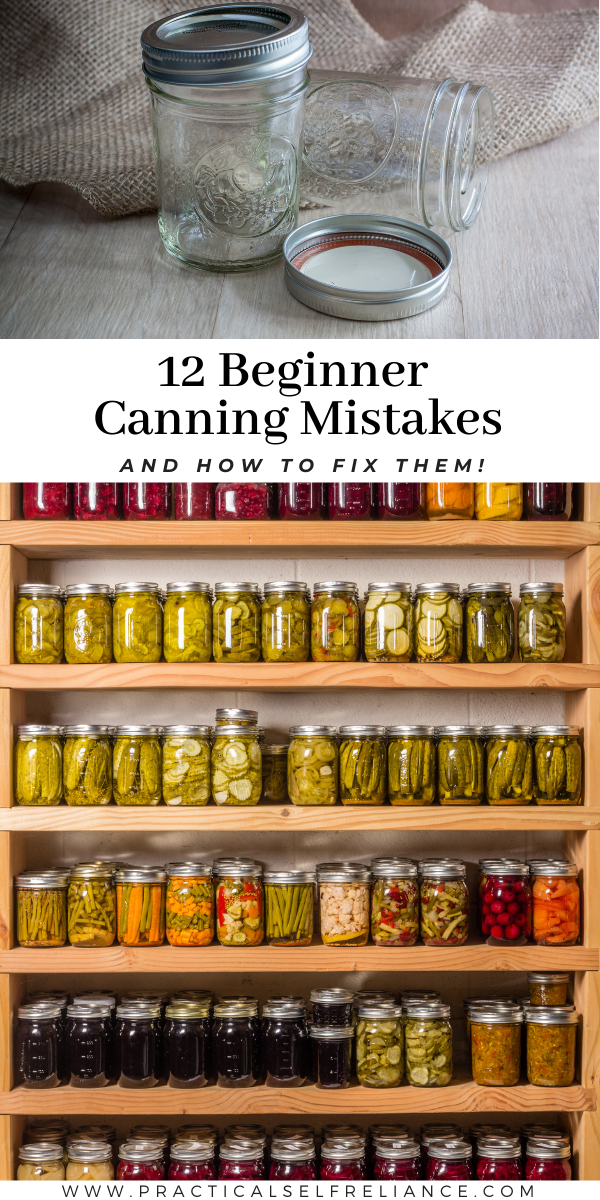

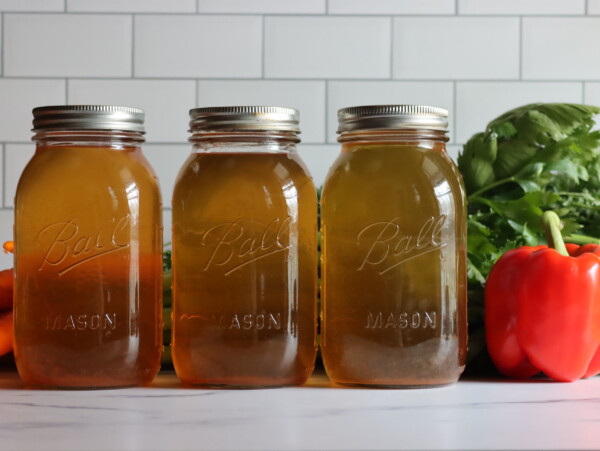
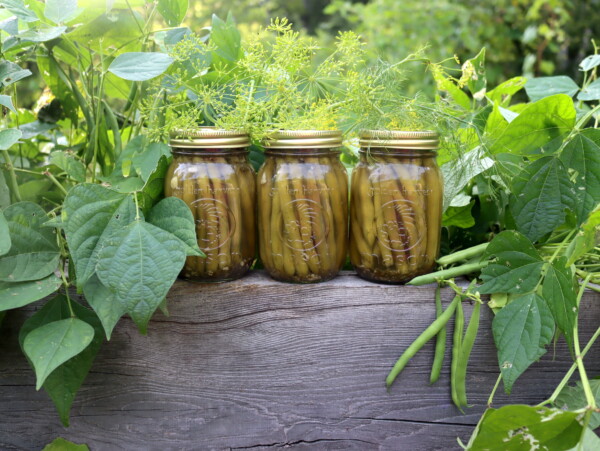
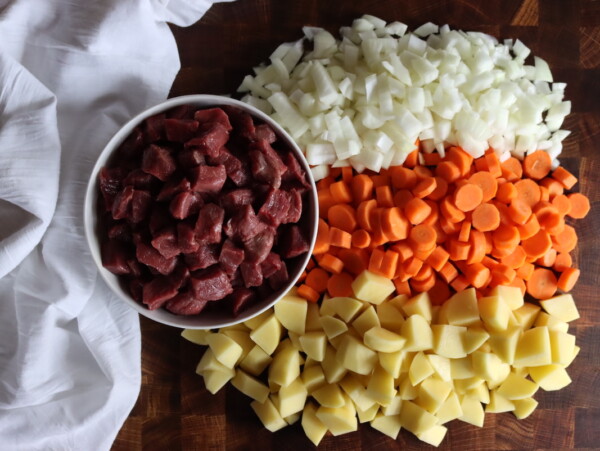










I have been searching the web for an answer to this question: when water canning red beets my jars took on liquid from the canner. Why? How can I prevent this from happening in the future? Is it safe to eat?
I’ve actually never seen jars take on water from the canner, that’s a new one. How do you know they took on water? Is their headspace less than it was when you put them in? Usually they lose water into the canner and with red beets it’d turn the canning water red, and that’s normal, it’s called siphoning, though it can be prevented. But actually taking in the canning water from the canner into the jars is unusual.
I’d love to can my salsa but feel nervous not using a canning recipe. How important is it to follow a canning recipe vs canning my own salsa recipe?
The biggest issue with canning is the acidity. You don’t necessarily have to follow an approved recipe exactly but you want to make sure that the acidity is either the same or greater. In a salsa recipe, you want to be sure that the ratio of tomatoes as opposed to non-acidic ingredients are the same ratio.
I pressured canned pork, raw packed for my first time using my pressure caner. All jars sealed But they lost liquid . There are jars that the meat is not under the liquid, Are these ok. I check the seals month later seal are good.
Should I throw out the meat because it is above the liquid line?
It sounds like you had some siphoning. As long as you didn’t lose more than half the liquid, they are ok. You may see a little discoloration of the meat above the liquid.
I forgot to add the broth to the pepper soup I mad their was some liquid in the soup. Will that be a problem with safety of the soup. All jars sealed.
Simply having sealed jars does not mean that the food is safe. It is important to follow the recipes exactly in order to ensure food safety. I would not consume food that was canned without the appropriate liquid required for the recipe.
Good article and helpful. I have lots of questions and bought the Ball “blue Book” hoping to learn and it did have a few good tips and lots of recipes but that is where the problem comes in. I want to create my own recipes and learn HOW to can and not just follow a set of instructions for specific recipes. They say over and over to use only “tried and true” recipes. But what if you cant find the recipe you want? I want to make a MULBERRY jam with little or no sugar. Cant find one. I want to make an Autumn Olive Recipe with less sugar, cant find one. I did follow one Autumn Olive recipe I found using apples instead of pectin and I followed instructions but it never set up and gelled. So now can I reprocess it with pectin? How much pectin to use? The Ball book said some jams may take 2 weeks to gel properly, so if it doesnt after 2 weeks can I reprocess it? It doesnt seem as simple as you say and finding answers is not easy.
You can find some great general guidelines for making jams and jellies here at the National Center for Home Food Preservation. https://nchfp.uga.edu/how/can7_jam_jelly.html#gsc.tab=0
And this is a great post on fixing runny jams. https://foodinjars.com/blog/canning-101-how-to-save-runny-jam/
When water canning, the water level in the pot fell below the top of the lids. Will this be a problem?
Yes, your jars should be covered by 1 to 2 inches of water during the entire processing time.
Is there anything I can do to get it right?
Did you lose water during the processing time? If the lid was on this shouldn’t be an issue.
No, the kids sealed and no liquid lost
I’m 70 and been canning for a few years. I’m pretty sure I made every mistake a person could concerning canning. I’d have loved to have had this site available, ‘back in the day’. Very good information!
Thank you very much. That is a great compliment from such an experienced canner.
I pressure cooked sliced carrots. I didn’t put boiling water in jars only room temperature. Is this still safe?
I am assuming you did a raw pack on the carrots?
I just found your page. We also live in Vt and really enjoy the articles we’ve read so far. Blessings
That’s wonderful to hear. So glad you’re enjoying the blog.
I accidentally loosened the ring on one of my jars when I took it out of the canner and immediately tightened it. Will that be a problem?
It should be fine. Just check the lids to make sure there is a good seal once the jars have cooled completely.
Thank you! I was searching for this answer too.
My pressure canner dial fogs up with steam can this be corrected … already bought a new one and that steams up too . Is this normal?
I would try contacting the manufacturer that you purchased the gauge from.
I was using a digital pressure canner, and received an error code in the middle of processing. The gasket seals slipped and so pressure was not maintained. I let the unit depressurize, fix the issue and restarted the process. My lid still had bumps on them so they had not sealed. My question is, is it fine that I left the jars alone and just restarted it? Or should I have used new lids? I am thinking that since the temperature / necessary pressure would be reached, as long as they seal they should be fine correct? Would anything happen that would cause them to seal and not be safe assuming I used the correct processing time? Thanks for any input.
It sounds like you did everything just right. As long as they were processed for the full amount of time and the lids seal, there is no need to use new lids.
Ok, question.. I canned 14 quarts of different meats (each in its own jar) two days ago an just realized that I canned them for 75 minutes rather than the 90 minutes the Ball book said. I just was’t thinking. But I did use 12 pounds pressure because I live at 1400 feet and all of them were about half full. I also did 20 pints the same way for the 75 minutes. Do I have to toss all of the quarts? The wife is finally on board with the prepper thing and is going to be really pissed at if it is all bad… Any help would be great. Meat has gone through the roof price wise. Thanks in advance
Rich
What kind of meat did you can and was it cubed, sliced, chunks or ground?
It was beef sirloin roast, pork loin and boneless and skinless chicken breast. All of it was cubed and put in quart jars. Only the chicken had some broth put in it, the others had nothing except Kosher salt and pepper corns in each jar.
Unfortunately if you didn’t process the meat for the correct length of time, you can’t be sure that it is safe for consumption.
Thank you! Yes I think I’ll do that 20 minute boil thing. It was a big batch of French Onion soup, so kind of a waste to just chuck it.
Useful article! I usually use pint sized jars, but just did a batch of quart jars with soup (we eat A LOT of soup). I realized I’d accidentally processed my quart jars for 75 minutes not 90. This was about a week ago. Will they still be good? Should I re-process them all or just eat them within the next few months?
Thanks!
Oh no, I’m sorry that happened! That’s enough to cause some serious safety concerns and I’d personally be pretty worried. At 24 to 48 hours after just re-processing would make sense to me, but at a week out I’m honestly not sure…
I think personally I’d go with “when in doubt, throw it out” and just call it a learning experience.
If you’re really committed to saving the soup my best guess would be to pour it all out into a big stockpot and bring it back to a hard boil for 20 minutes with no lid. That’s the instruction generally given by the national center for food preservation to destroy any toxins that could be present if you’re not confident in how something was canned. Then re-process using the correct instructions.
That’s my best guess on what would work, I’d urge you to use your best judgment as it’s just a guess.
What about if you overprocess in the waterbath? I cooked 2 quarts and a pint in a waterbath the other night and fell asleep so that the 2 quarts ended up without water covering the top of them for probably 30 to 45 minutes. One of the quarts showed a lower level of tomatoes than originally packed with. Do I toss them all?
I wouldn’t think that overprocessing would cause them to be unsafe but it could affect the quality.
I have an addition to the list of common mistakes. When gifting preserves to friends/family/coworkers, if they even bother to return your jars, check them! A lot of food manufactures these days sell preserves/sauces in Mason brand jars. These will be stamped on the bottom with a recycle symbol or the words “consumer glass”. You MAY get lucky and have them come out of the canner intact but I find that the majority of water bath breakage comes from jars I neglected to check.
Thank you for this article. It is clearly written and has logical reasons based on the author’s experience – not just the typical “because they say so” rules.
I have recently started more serious canning with the purchase of a pressure canner and have spent more time researching all the do’s and don’ts than I have in the actual canning just yet. Over the past couple years, I have canned my own tomato sauce. This year I was excited to learn that applesauce could also be water bath canned. (These are the 2 foods I make every fall for the winter.) My brother gave me about 15 pounds of potatoes from his garden recently and that was the push I needed to start pressure canning! As I write this, my first batch of potatoes are in the canner, cooling down and depressurizing. (Two days ago, I successfully canned 4 quarts of turkey broth too.)
Wonderful, so happy you’re tackling potatoes. Good luck with your canning!
Hello, i am going to start canning after i move. Dont want to buy things now just to move them. When reading this you wrote about taking the rims off the jars when canning is complete and to store without rims. Below that is a picture of a pantry and all the jars have rims on them, my grandmother used to can and all her jars had rims on. So do you remove the rims for all foods or is just a certain type of food. Thanks
I remove them for all food. The pantry shelf is a stock photo example of what not to do.
It’s RINGS not RIMS! Using improper terms only causes confusion especially for beginners.
I think this might be a regional thing? Just like how some places every type of soda is called a coke. I hear just as many people call them rims as rings.
It’s definitely a regional thing. I’m from Nova Scotia and we say canning rings. So long as it’s pointed out to beginner canners, it shouldn’t be too confusing.